Part 65: Midwest: April 15, 1945

This battle has been off to a bit of a slow start, and spring weather is delaying our advance. We haven't had any major losses yet, however, so it should continue well.
Axis Turn 5: April 15, 1945
Rain (Mud)
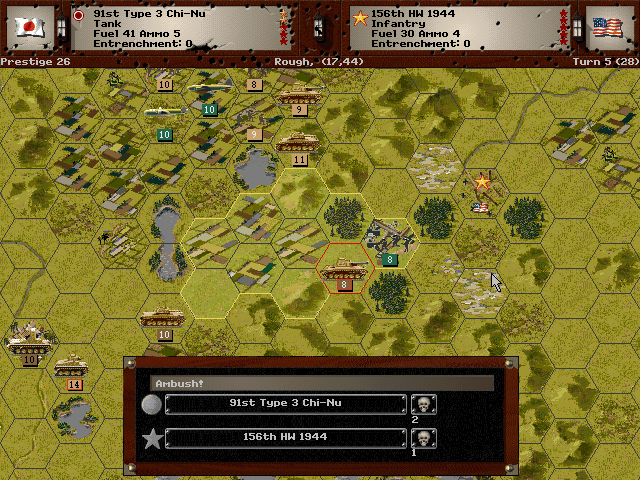
We try to swing toward St. Louis from the southwest, but run into an ambush near Fort Leonard Wood.
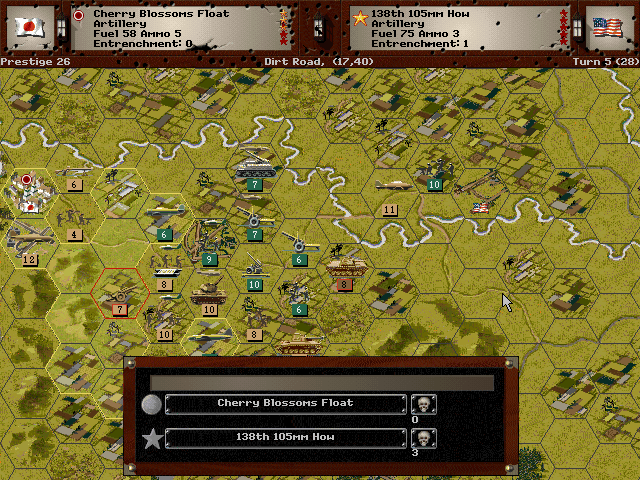
It's not that much of a concern, as we've taken out the heavy tanks and are now just reducing the bulk of the forces that had halted our advance.

Our troops moving into Iowa finally encounter new enemies.
Allied Turn 5: April 15, 1945
Rain (Mud)
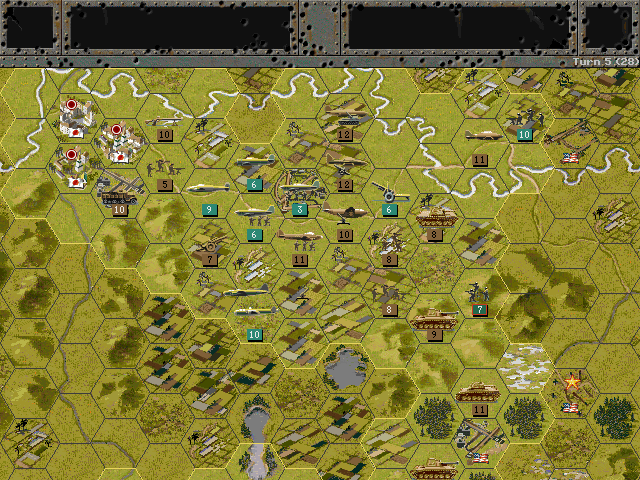
The American bombers are still overwhelming our ability to deal with all of them, though the weather helps.
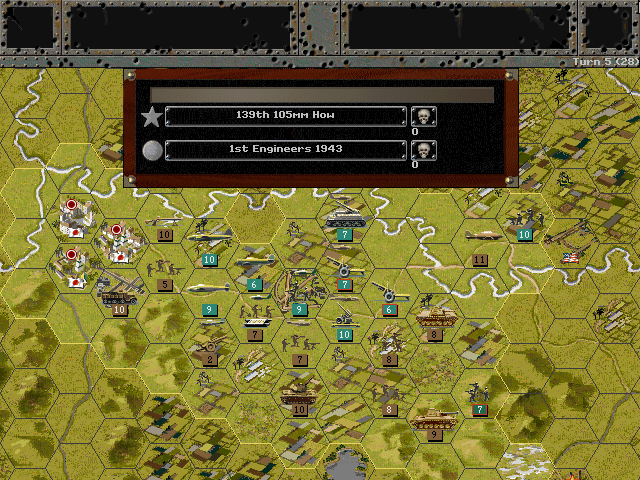
Their guns on the ground are losing effectiveness. Again the weather is helping us here.
Axis Turn 6: April 16, 1945
Cloudy (Mud)
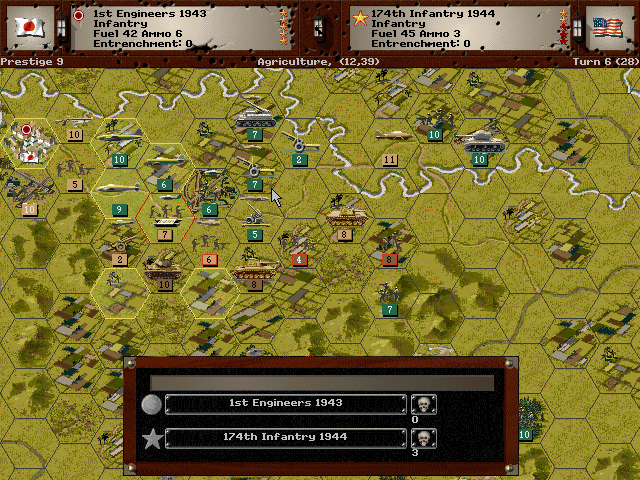
We continue to eliminate more enemy forces; we should be able to keep any reinforcements from getting across the Missouri.
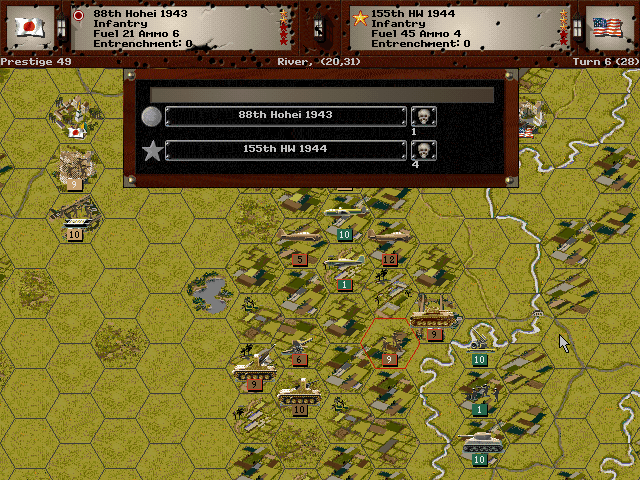
To the north, we make it all the way to the Mississippi River.

Our best aces in our best planes get the better of the enemy's fighter pilots.
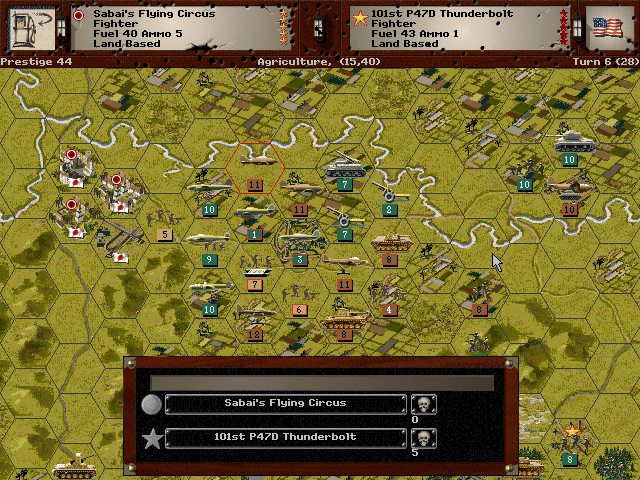
Sabai flies rings around the P-47's.
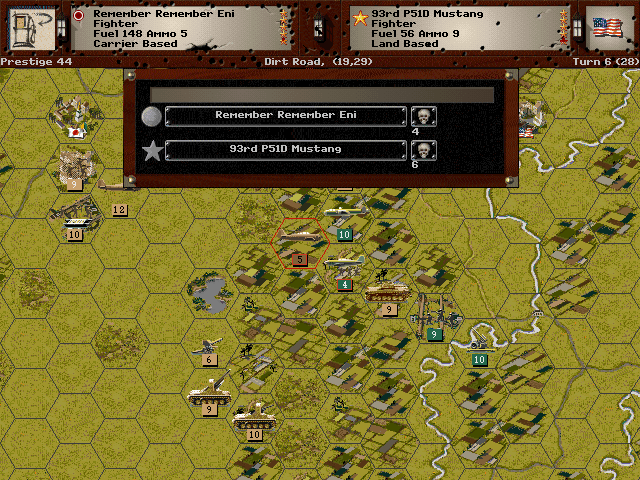
Even the Zeros get in on the action, though it's a more even fight for them.
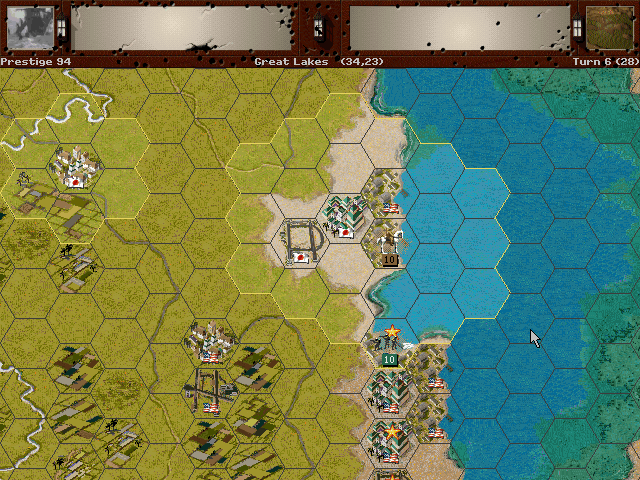
Our spies take control of Milwaukee.
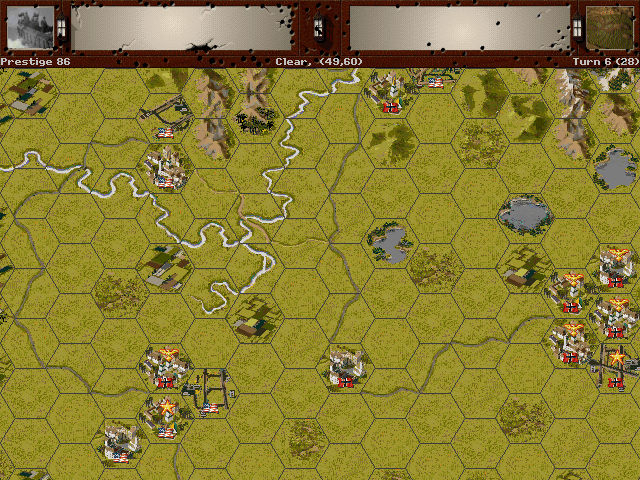
The Germans seem to be in a struggle over Birmingham.
Allied Turn 6: April 16, 1945
Cloudy (Mud)
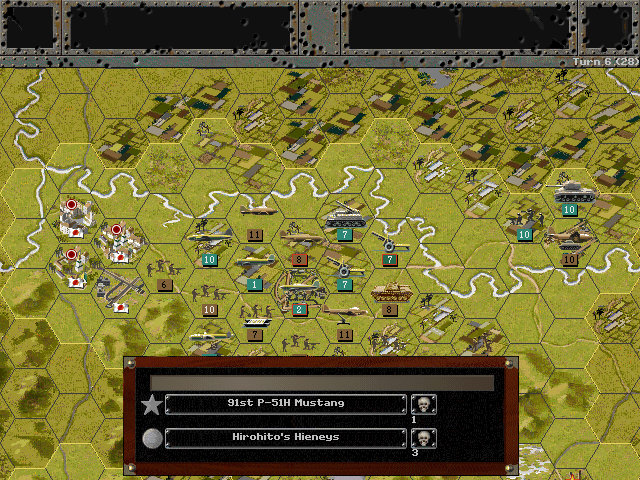
The Americans keep up the pressure in the air.
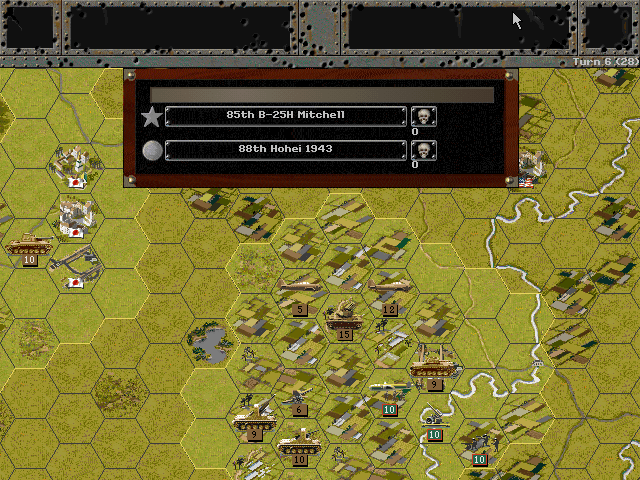
Luckily for us, their bombing is inaccurate.
Axis Turn 7: April 16, 1945
Cloudy (Mud)
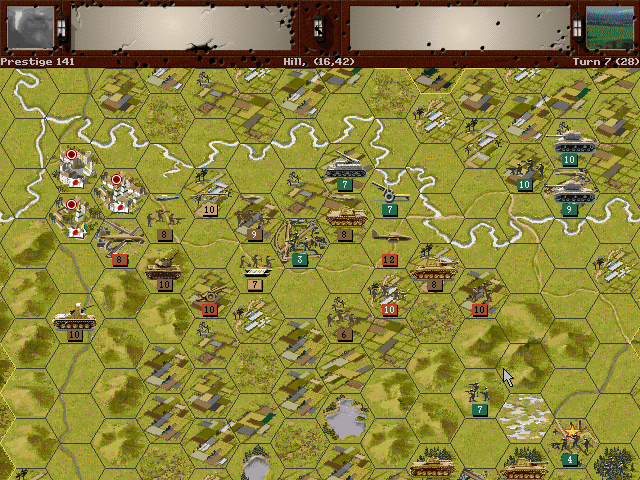
Fighting remains heavy and progress is slow in the center.
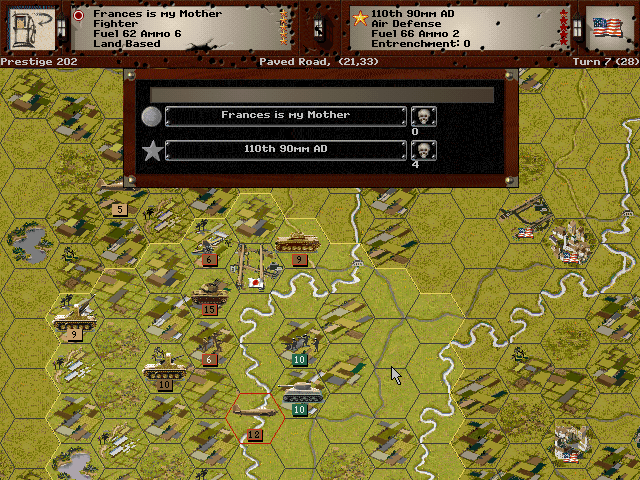
We hold the line and prepare to cross the river in the north.
Allied Turn 7: April 16, 1945
Cloudy (Mud)
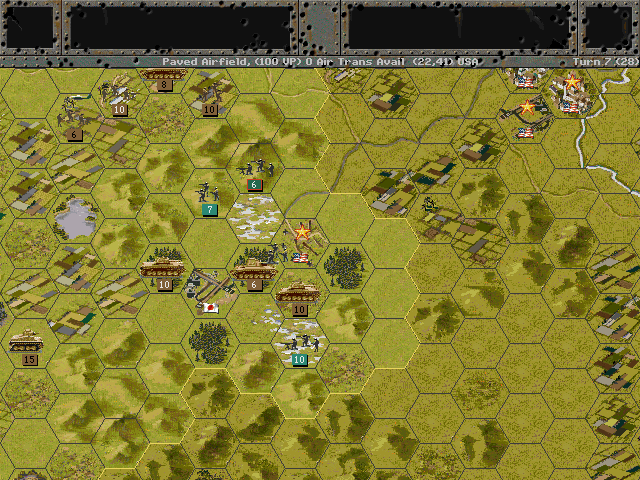
The Americans pull out of Fort Leonard Wood, apparently in an attempt to slow our other forces.

Heavy bombings continue.
Axis Turn 8: April 16, 1945
Fair (Dry)
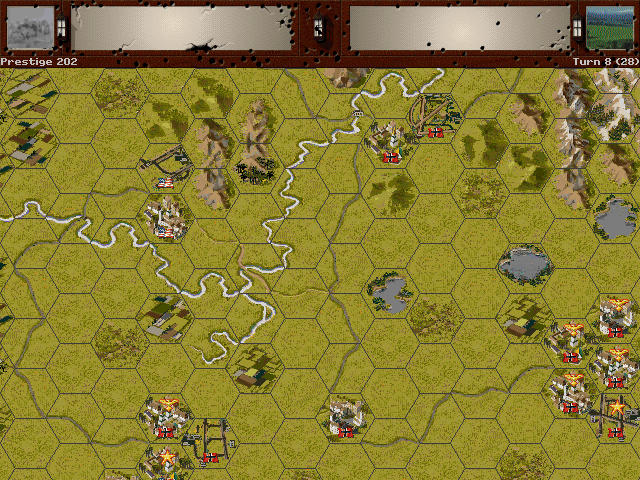
German forces are making some progress.
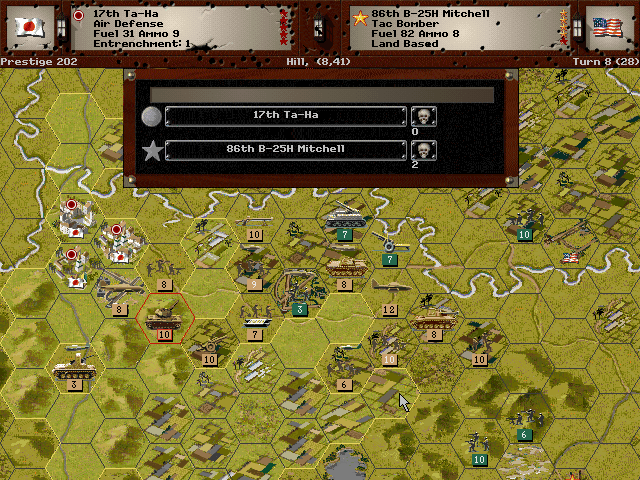
Our new anti-air units get a chance to test out their guns.
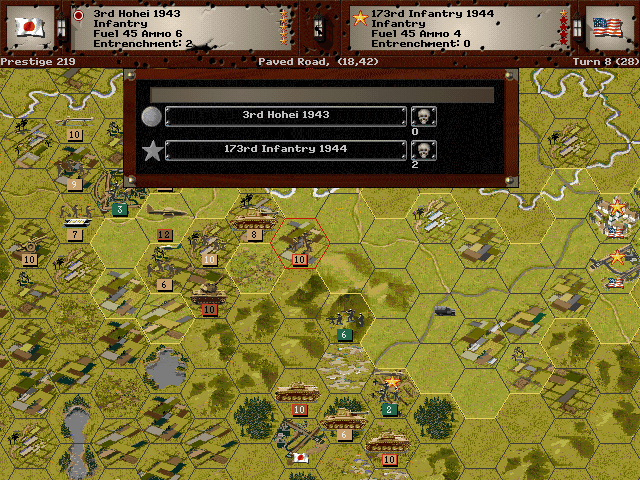
The American front line is nearly defeated, but they're still putting up quite a fight.
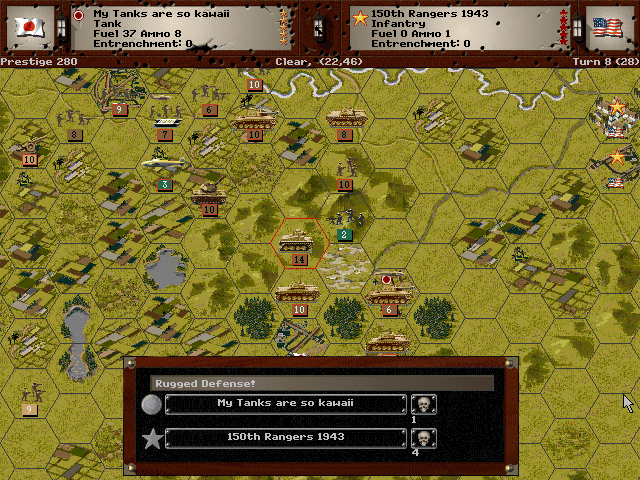
We do take the fort, but it's a difficult battle. Not all the enemy troops had abandoned the area.
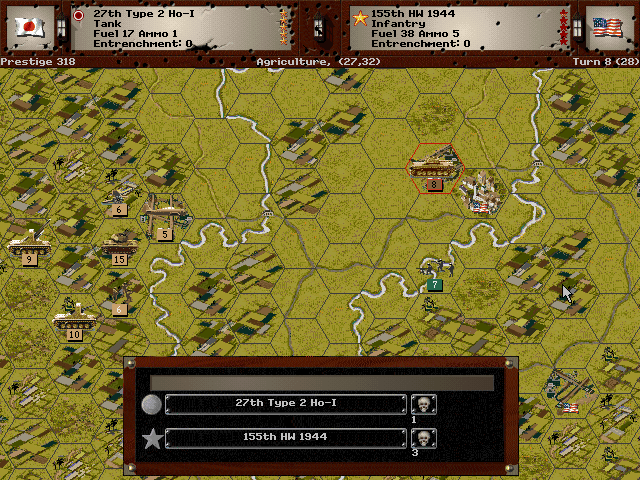
With clear weather, we make it across the river and move on Peoria.
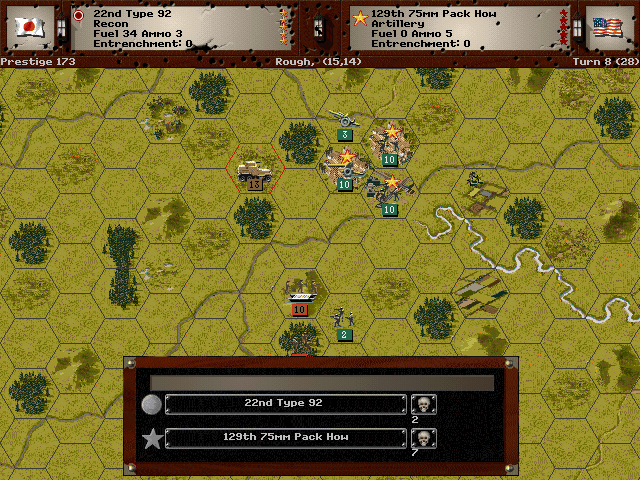
We've also finally reached the chilly northern city of Minneapolis.
Allied Turn 8: April 16, 1945
Fair (Dry)
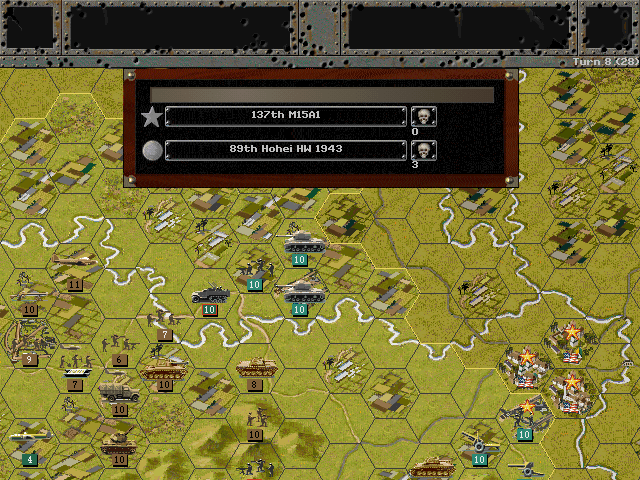
The Americans test our infantry guarding the bridge over the Missouri river.

The troops in the north are met by a contingent of heavy tanks, coming from the south this time.
Axis Turn 9: April 16, 1945
Fair (Dry)
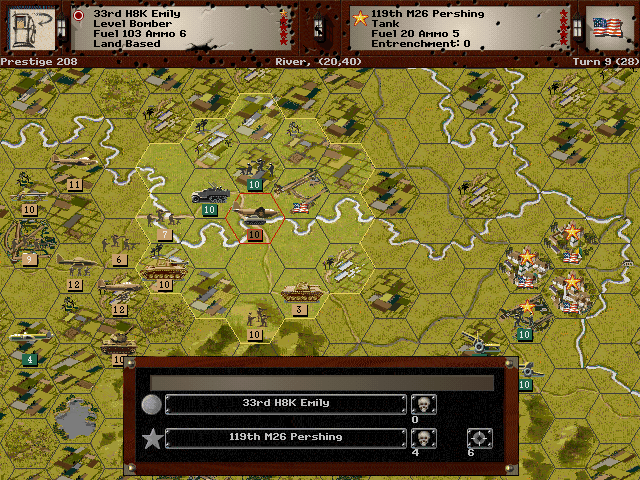
We target the Pershings for destruction.
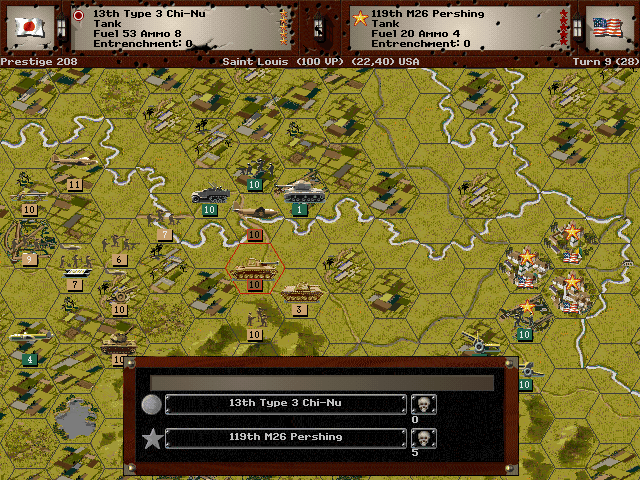
Our tanks may not quite match up, but our men have more skill and the enemy is an a bad position.
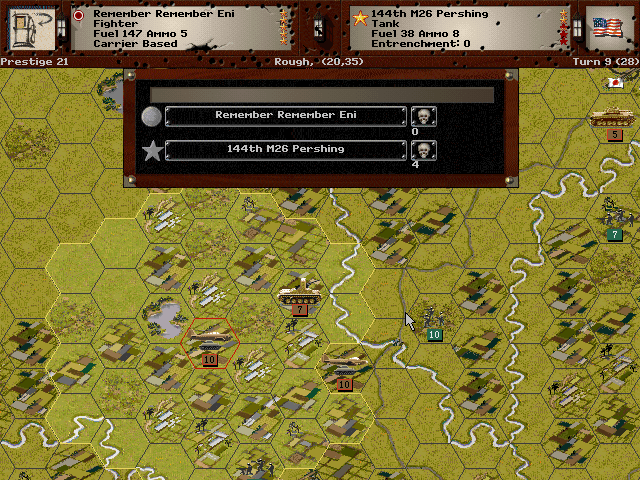
The tanks also seem unprepared for our strafing runs.
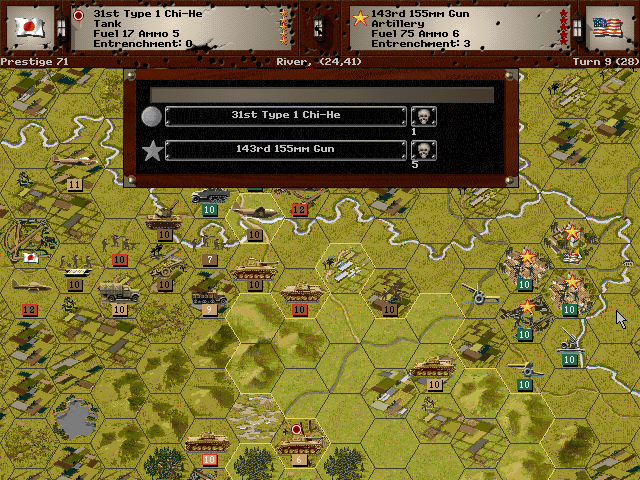
Initial skirmishes begin at St. Louis. The defenses seem hastily prepared and disorganized.
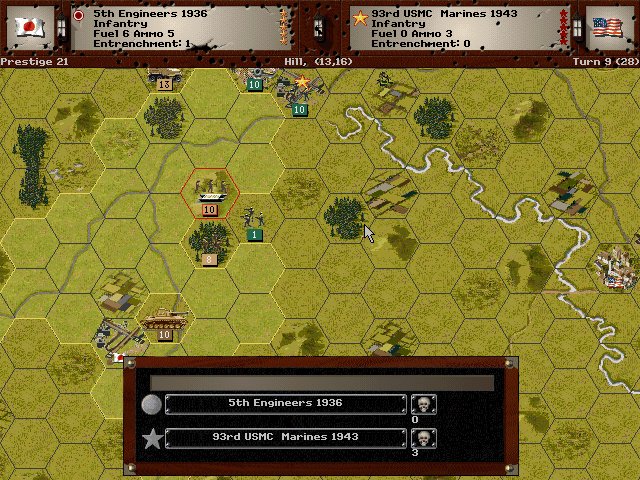
We are also getting our troops ready to attack the Twin Cities, just as soon as we ensure the surrounding towns are free of resistance.
Allied Turn 9: April 16, 1945
Fair (Dry)
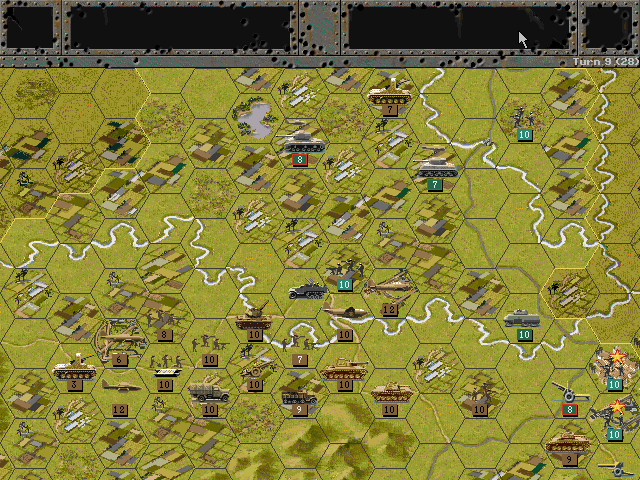
The Americans pull back from the Missouri; they are holding on to a good chunk of territory north of the river, however.
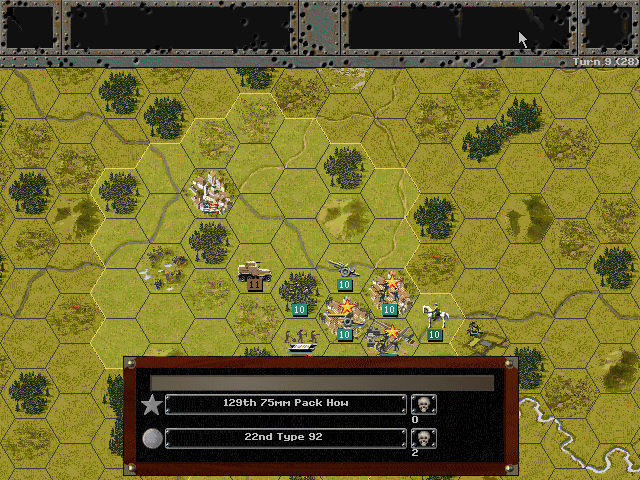
The Minnesotans do their best to harass us.
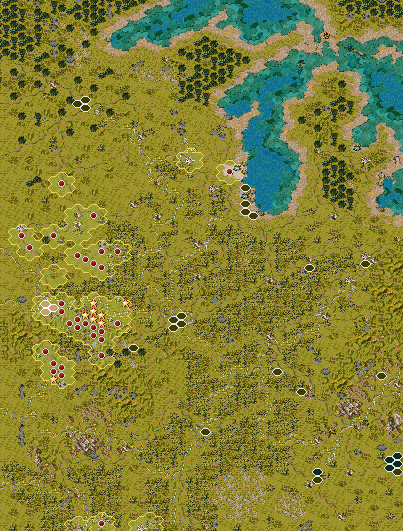
Unit Spotlight
Some unpleasant land and sea units today, but also a double-feature of optimistic aircraft technology.
Kempeitai [Military Police]
PG Name: Kempeitai Type: Infantry
Effective Date: 1/45
Value:15 Cost:180 Spot:3 Move:3 MM:Leg Trans:Air Fuel: -
Init:2 SA:8 HA:6 AA:1 NA:1 GD:9 AD:10 CD:0 TT:Soft Ammo:5
Special: Banzai, Guard
The Kempeitai started out in the 19th Century as relatively normal police units, but later became notoriously cruel under the leadership of Hideki Tojo. During the war they were given broad police powers, especially in occupied territories, and they are often referred to as 'the Japanese Gestapo'. Although militarily trained to a high standard, they were not used in combat. Instead they participated in counter-intelligence operations and were a ruthless tool for suppressing the population. The Kempeitai are associated with many war crimes of Japan, and although some were tried and executed after the war, destruction of records allowed others to cover their tracks.
In-game analysis: Disregarding their appalling real-life history, these are pretty nice for their combat ability and mobility. But they do cost almost twice as much as the Imperial Guards, and while they are definitely superior, its hard to say they are that much superior. I certainly wouldn't be upset to have them around, and in a situation where there is more prestige than available unit slots, I think this might be a good option (if you could buy them -- I think they are actually not purchasable.)
Kaiten Manned Torpedo (~400 built, ~100 used)
PG Name: Kaiten Type:Submarine
Effective Date: 7/44
Value:1 Cost:12 Spot:1 Move:4 MM:Coastal/Sub Trans:Naval Fuel: 16
Init:3 Range:0 SA:0 HA:0 AA:0 NA:10 DA:0 GD:2 AD:4 TD:8 DD:4 Ammo:1
This was another one of Japan's desperate suicide weapons. It was a torpedo, mounted with a simple periscope and space for a person to fit inside to guide it. Even with active guidance, it was still difficult to hit the target, as they could not spot the target once the attack run started. About the only real advantage it had over a traditional torpedo was that it could conceivably be retargeted if it missed (although if it went too far off target, the pilot would be left stranded when it ran out of fuel). The craft had numerous other problems making it unreliable. While a handful of Allied ships were indeed confirmed kills from Kaiten, it does not seem as though they were worth it in any sense.
In-game analysis: This might be the only Kamikaze weapon that's cheap enough to be disposable, but I still wouldn't use it. You'd have to be awfully short of funds to need this -- midget subs (not the Kairyu) are a better option since they have more fuel, better spotting, and aren't guaranteed to die on attack. And while I'm not normally that concerned about the lives of my virtual soldiers, I have to say I find this weapon particularly unpleasant to imagine.
Mitsubishi J8M "Shusui" / Ki-200
PG Name: J8M Type:Fighter
Effective Date: 1/45
Value:47 Cost:564 Spot:3 Move:10 MM:Air Trans:No Fuel: 34
Init:8 SA:3 HA:2 AA:22 NA:0 GD:11 AD:8 Ammo:4
Toward the end of the war the Japanese licensed the design of the Messerschmidt 163 Komet, a German rocket fighter. While fast, the Komet itself was not a particularly good fighter plane, mostly because it burned through its fuel so quickly. The Japanese had some trouble finalizing the design, but they had prototyped several of these by August of 1945 when the war came to an end.
In-game analysis: The J8M and the Kikka are two similar models that show up at the same time. Unfortunately the J8M is the evil twin of the pair. The J8M matches the in-game specs of the Komet, and you could hardly make a worse plane for the price if you tried. From its poor fuel capacity to its laughably weak armor, this is just a super-expensive glass cannon. The worst part is that it might not even be as strong on attack as the Kikka.
Nakajima J9N1 "Kikka"
PG Name: Kikka Type:Fighter
Effective Date: 1/45
Value:48 Cost:576 Spot:3 Move:10 MM:Air Trans:No Fuel: 108
Init:7 SA:3 HA:3 AA:25 NA:0 GD:9 AD:17 Ammo:6
The Kikka was a planned jet fighter that was first prototyped in June of 1945, and never made it much past that stage before the war ended. Although the Japanese jet program was inspired by the German Me262, the Kikka was a fully domestic design. It's difficult to say what its combat performance would have been like, but it's not unreasonable to imagine it being on par with the other jet fighters of the era.
In-game analysis: Everything the Shusui has wrong, the Kikka has right. This is one of the better jet planes available, and it even shows up half a year before any of the others. It's roughly equivalent to the Me262 or Meteor III. It might be costly, but it's also the only Japanese plane that can reasonably survive a match-up with the late-war heavy fighters. The weakness to flak is a slight concern; it's best used in an interception/defensive role than for escort and attack.